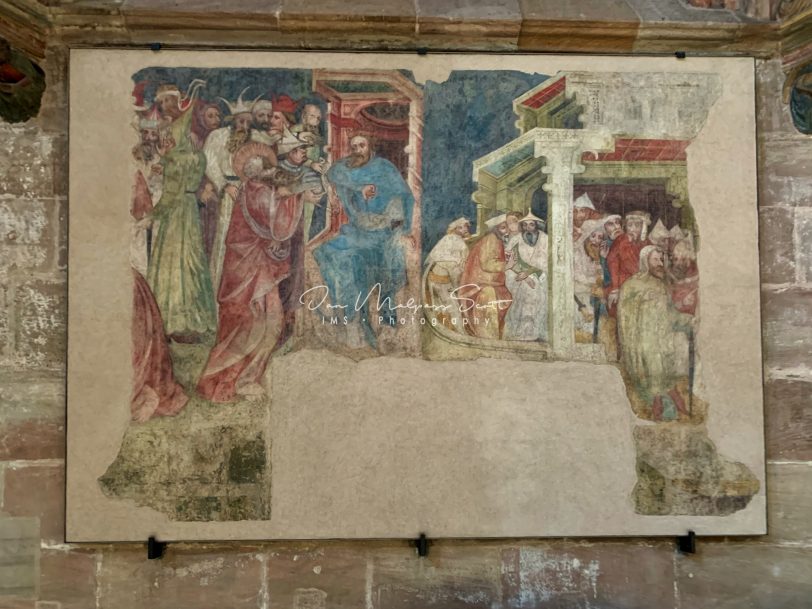![]()
Painting in St. Sebaldus Church, Nuremberg, Germany
St. Sebaldus Church (St. Sebald, Sebalduskirche) is a medieval church in Nuremberg, Germany. Along with Frauenkirche (Our Lady’s Church) and St. Lorenz, it is one of the most important churches of the city, and also one of the oldest. It is located at the Albrecht-Dürer-Platz, in front of the old city hall. It takes its name from Sebaldus, an 8th-century hermit and missionary and patron saint of Nuremberg. It has been a Lutheran parish church since the Reformation.
The construction of the building began in 1225. the church achieved parish church status in 1255 and was completed by 1273–75. It was originally built as a Romanesque basilica with two choirs. During the 14th century several important changes to the construction were made: first the side aisles were widened and the steeples made higher (1309–1345), then the late gothic hall chancel was built (1358–1379). The two towers were added in the 15th century. In the middle 17th century galleries were added and the interior was remodelled in the Baroque fashion. The church suffered serious damage during World War II and was subsequently restored. Some of the old interior undamaged includes the Shrine of St. Sebaldus, works by Veit Stoss and the stained glass windows. In the church the famous epitaph of the Tucher family can be found.
![]()


